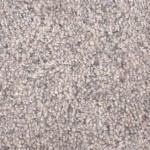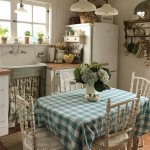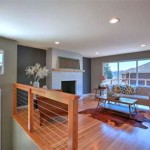Embracing Dark Green: A Guide to Sophisticated Interior Decor
Dark green decor is experiencing a resurgence in popularity, offering a sophisticated and grounding alternative to neutral color palettes. Its richness evokes a sense of nature, luxury, and timeless elegance, making it a versatile choice for various interior design styles. This article explores the strategic application of dark green in interior spaces, offering practical advice and inspirational ideas.
The appeal of dark green stems from its inherent connection to the natural world. It mirrors the hues of deep forests, foliage, and precious gemstones, creating a feeling of tranquility and stability. Unlike brighter greens, which can sometimes feel overwhelming, dark green possesses a calming presence, making it suitable for creating relaxing and inviting environments. It also works exceptionally well as a backdrop, allowing other design elements to stand out, and enhancing the overall visual interest of a room.
Understanding the Psychology of Dark Green
Color psychology suggests that dark green is associated with growth, prosperity, and stability. Decorating with dark green can promote a sense of balance and well-being, creating a space that feels both comforting and stimulating. Its grounding qualities can also help to reduce stress and create a more focused environment, making it a suitable choice for home offices and reading nooks.
Furthermore, dark green is often linked to sophistication and luxury. This association makes it a popular choice for creating elegant and timeless interiors. When paired with the right materials and textures, dark green can elevate the overall aesthetic of a space, transforming it into a sanctuary of style and comfort. The shade is inherently versatile and can be adapted to many styles when the correct pairing is chosen.
Implementing Dark Green in Different Spaces
The application of dark green is not limited to a single room or style. Its adaptability allows it to be incorporated into various spaces, each with its own unique character. This section will explore different areas of the home and provide specific suggestions for using dark green effectively.
Living Rooms: In living rooms, dark green can be used as an accent color or as the dominant hue. Painting an accent wall in a deep shade of green can create a focal point and add depth to the room. Alternatively, a dark green sofa or armchair can serve as a statement piece, instantly elevating the space. Pair dark green with natural materials like wood and leather to create a warm and inviting atmosphere. Accessorizing with gold or brass accents can add a touch of luxury.
Bedrooms: For bedrooms, dark green promotes relaxation and tranquility. Consider using dark green as the primary color for the walls, creating a cocoon-like effect. Soft textures like velvet and linen can complement the deep hue, enhancing the sense of comfort. Incorporating natural elements, such as plants and wooden furniture, can further enhance the calming atmosphere. Opt for muted lighting to create a serene ambiance that encourages restful sleep.
Kitchens: Dark green can bring a sophisticated touch to kitchens. Painting kitchen cabinets in a deep green shade can create a striking visual impact. Complement this with light-colored countertops, such as marble or quartz, to create a balanced and elegant look. Incorporating brass hardware and fixtures can add a touch of luxury. Plants and herbs can also be used to enhance the connection to nature, adding freshness and vitality to the space. A dark green backsplash can also be a very effective way to make the kitchen pop.
Bathrooms: In bathrooms, dark green can create a spa-like atmosphere. Painting the walls in a deep green shade can transform the space into a tranquil oasis. Pair this with white fixtures and natural stone elements to create a balanced and harmonious design. Incorporating plants and candles can further enhance the relaxing ambiance. Using dark green tiles for the shower or a feature wall can add a touch of sophistication.
Home Offices: Dark green is an excellent choice for home offices, as it promotes focus and concentration. Painting an accent wall in a deep green shade can create a stimulating and productive environment. Complement this with wooden furniture and natural light to create a balanced and inviting space. Incorporating plants can further enhance the connection to nature, reducing stress and promoting well-being. Using dark green accessories, such as desk organizers and file cabinets, can also contribute to a cohesive and professional aesthetic.
Working with Different Shades and Undertones
Dark green encompasses a wide range of shades and undertones, each with its own unique character. It is important to consider the specific nuances of each shade when incorporating it into an interior design scheme. This section will explore some of the most popular dark green variations and provide guidance on how to use them effectively.
Olive Green: Olive green is a muted, earthy shade that is inspired by the color of olive leaves. It is a versatile choice that can be used in a variety of spaces, from living rooms to bedrooms. Olive green pairs well with natural materials like wood and leather, as well as warm metallic accents like gold and brass. This subdued green brings a calming vibe to the room and is a great alternative to other more vibrant greens.
Emerald Green: Emerald green is a rich, jewel-toned shade that is associated with luxury and sophistication. It is a bold choice that can be used to create a dramatic and eye-catching effect. Emerald green pairs well with luxurious materials like velvet and silk, as well as metallic accents like silver and gold. Use emerald green sparingly, as it can be overwhelming if overused, for example using it for cushions or lamps.
Forest Green: Forest green is a deep, lush shade that is inspired by the colors of a dense forest. It is a calming and grounding choice that can be used to create a sense of tranquility and connection to nature. Forest green pairs well with natural materials like wood and stone, as well as earthy tones like brown and beige. This shade is typically more of a muted tone, and often brings a great calming feeling to any room that it is used in.
Teal Green: Teal green is a blue-green shade that is associated with creativity and innovation. It is a refreshing choice that can be used to add a touch of personality to a space. Teal green pairs well with cool tones like blue and gray, as well as metallic accents like silver and copper. Teal green should be used with careful consideration, as it can be too overpowering if used too much. Use it as an accent color for a more striking look.
Complementary Colors and Material Pairings
The success of dark green decor hinges on its harmonious integration with other colors and materials. Selecting the right complementary elements is crucial for creating a balanced and visually appealing space. This section will explore some of the most effective color pairings and discuss how different materials can enhance the overall aesthetic.
Neutrals: Dark green pairs exceptionally well with neutral colors like white, beige, and gray. These colors provide a calming backdrop that allows the green to stand out without being overwhelming. White walls can create a fresh and airy contrast with dark green furniture or accent walls. Beige and gray can add warmth and depth to the space, creating a more inviting atmosphere.
Warm Tones: Incorporating warm tones like gold, brass, and copper can add a touch of luxury and sophistication to dark green decor. Metallic accents can be used in lighting fixtures, hardware, and accessories to create a subtle shimmer that complements the deep hue. Warm wood tones can also be used to enhance the natural feel of the space, creating a sense of warmth and comfort.
Cool Tones: Cool tones like blue, purple, and silver can create a harmonious and balanced contrast with dark green. These colors can be used in textiles, artwork, and accessories to add visual interest and depth to the space. For example, a dark green sofa paired with blue cushions can create a striking and sophisticated look.
Natural Materials: Natural materials like wood, stone, and leather can enhance the connection to nature and create a warm and inviting atmosphere. Wood furniture can add texture and depth to the space, while stone elements can provide a sense of grounding and stability. Leather accents can add a touch of luxury and sophistication.
Textiles: The choice of textiles can significantly impact the overall feel of a dark green space. Velvet, silk, and linen are all excellent choices for creating a luxurious and comfortable atmosphere. These materials can be used in upholstery, curtains, and bedding to add texture and visual interest to the space. Consider incorporating patterns and prints to add personality and character to the design.
Lighting and Accessories for Dark Green Spaces
Lighting plays a crucial role in enhancing the beauty of dark green decor. The right lighting can highlight the richness of the color and create a warm and inviting ambiance. This section will explore different lighting options and discuss the importance of accessorizing with thoughtful and complementary pieces.
Natural Light: Maximize natural light whenever possible. Large windows and skylights can bring a sense of airiness to a dark green space, preventing it from feeling too heavy or closed in. Sheer curtains can be used to diffuse the light, creating a soft and welcoming glow. Position furniture strategically to take advantage of natural light sources.
Artificial Light: Incorporate a variety of artificial light sources to create a layered and dynamic lighting scheme. Ambient lighting, such as recessed lights and chandeliers, can provide overall illumination. Task lighting, such as desk lamps and reading lights, can be used to focus illumination on specific areas. Accent lighting, such as spotlights and wall sconces, can highlight architectural features and artwork.
Warm vs. Cool Light: Consider the color temperature of your light bulbs. Warm light (2700-3000K) can create a cozy and inviting atmosphere, while cool light (3500-4000K) can provide a more energizing and stimulating effect. Experiment with different color temperatures to find the right balance for your space.
Accessories: Choose accessories that complement the dark green decor and enhance the overall aesthetic. Plants and greenery can bring a sense of nature indoors, adding freshness and vitality to the space. Artwork and decorative objects can add personality and character to the design. Mirrors can reflect light and create the illusion of more space. Rugs and carpets can add warmth and texture to the floor.

Modern Living Room Black And Green Theme Dark Rooms Home Decor Interior Design

Dark Green Color Trend Living Room Decor Rooms

Dark Green Design Dreamy Rooms Spaces Firefly Finch

Dark Walls With Green And Pink Velvet Sofas A Beautiful Industrial Feel In This Living Room Space Eclectic Bedroom Interiors Decor

My Green Living Room With Dark Paint Bigger Than The Three Of Us

25 Welcoming Green Living Room Decor Ideas Shelterness

52 Interiors Dark Green Walls Ideas House Interior Design

How To Use Dark Green In Your Living Room

Dark Green Design Dreamy Rooms Spaces Firefly Finch

Green Living Room Design For All Home Décor Styles Beautiful Homes
Related Posts







